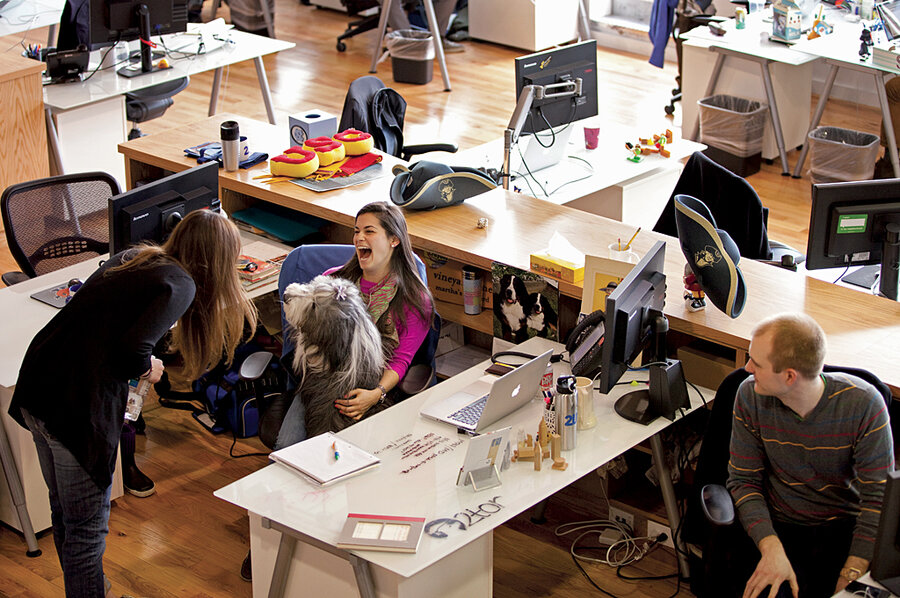PJs or pinstripes? The tradeoffs of tele-work
Loading...
Who would have thought that well into the second decade of the 21st century water-cooler seminars and hallway chitchat would be held up as the unique value proposition of an office? But thanks to Yahoo’s Marissa Mayer and other managers who have newfound qualms about telecommuting, the serendipitous conversations and informal collaborations that take place in an office – sometimes also called slacking and breeze-shooting – are being touted as the secret sauce of business.
There is something to that. Silicon Valley in California; Kendall Square in Cambridge, Mass.; and other tech incubation districts are famous for their pizza parties, foosball tables, and networking mixers. Proximity is the point. But at the same time, technology and demographics are driving telecommuting. Which trend will win?
In a Monitor cover story, Eilene Zimmerman digs into that question, paying close attention to the trade-offs: human contact versus isolation, teamwork versus concentration, the distraction of co-workers versus the distraction of the fridge. Whichever camp you are in – happily productive in your pj’s 24/7 or success-dressed and hopping from conference room to brainstorming session Monday through Friday – you know there are pros and cons. Working side by side is good for some people and some projects; concentration and quiet are good for others. And there are plenty of jobs where showing up will always be necessary. Remote plumbing, policing, and nursing will never really cut it.
Let’s imagine what work might look like a decade from now. First, set aside technological what ifs and meet the workers. As Eilene notes, Generations X and Y have a distinctly different view of the daily commute, the structured workday, and the value of water-cooler socializing than their predecessors. For them, the personal and professional blend. The office, while attractive in some regards, is not a place to rely on for job security or social gratification. In short, digital natives are predisposed to telecommuting.
By 2023, this new breed of workers will anchor the workforce, and telecommuting technology will have advanced by 10 years, bringing ever closer the possibility of seamless “telepresence” from wherever people are. Human contact will still be important, however, and smart managers will make sure that occurs. But fighting traffic and clocking in every day looks like an idea whose time is passing.
If telecommuting is still novel, even controversial, in today’s workplace, it will be normal in tomorrow’s. The real challenge is how to manage it.
John Yemma is editor of the Monitor. He can be reached at editor@csmonitor.com.






